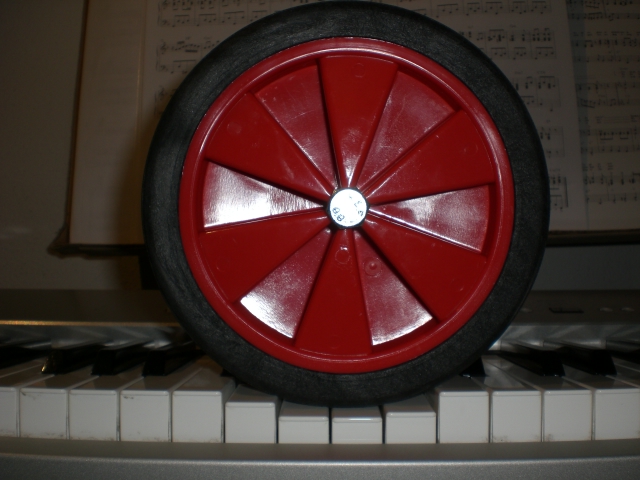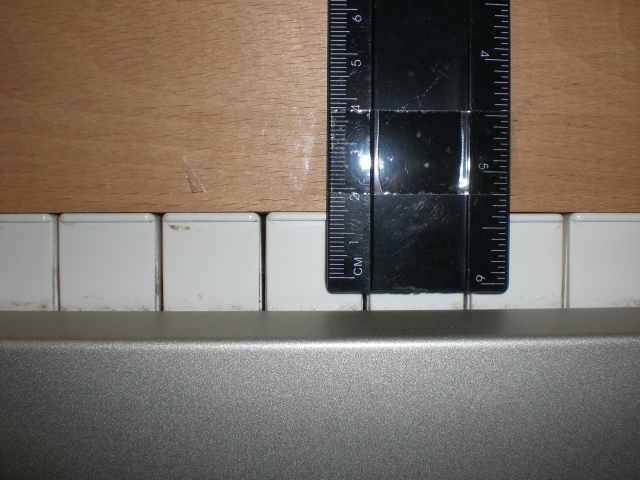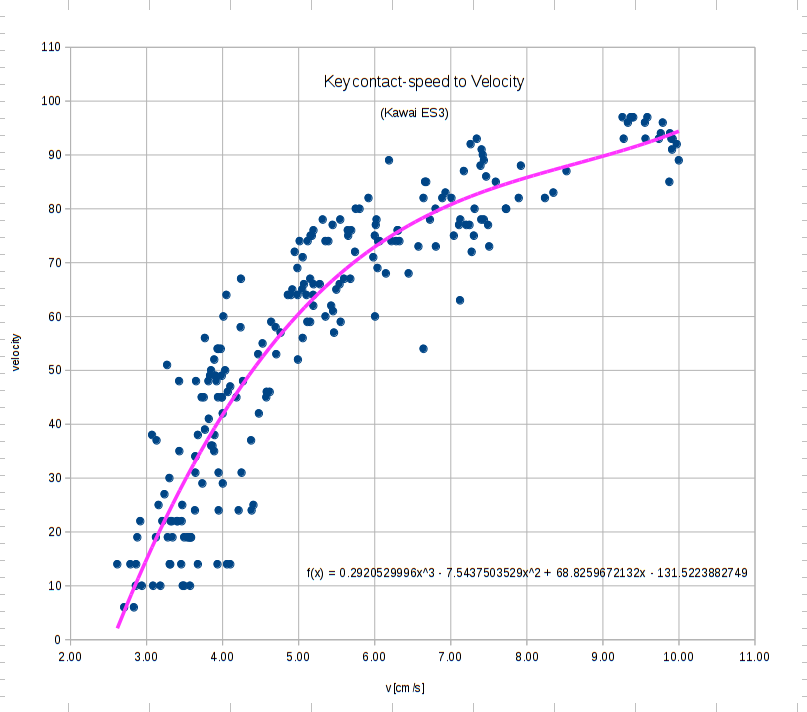Topic: Mechanical Velocity
Hi there,
I geeked out about velocity again . I wanted to know the relation between the "mechanical" speed of my keys and its "electrical" representation known as MIDI-velocity. I don't know any methods for this and so I re-invented the wheel ...

Rolled over the keyboard of my Kawai ES3 I got columns of note-on velocity values. Together with note-off for each note and the timespan between those events I tried to calculate the angular speed of the turning wheel at each note-on. Required were the diameter 185 mm an the trigger-points of my keys, that I measured with a ruler to be -9 mm for note-on, -5 mm for note-off, and around -12 mm for key down completely:

With some trigonometry and the combined values of five roll-overs at different speeds (slow -> medium -> fast) I got a non-linear response to the "mechanical" speed of the keys:

I don't know, whether this non-linear response it typical for the majority of keyboards with rubber-bubble-contacts or just for Kawai models like this ES3 (or if I just did the wrong math). It would be interesting if something is known around this topic.
Thanks for your attention